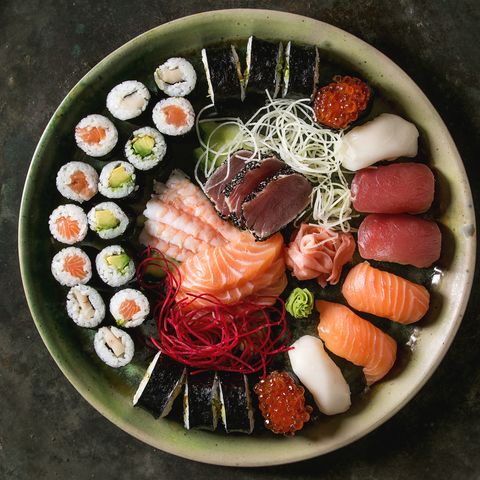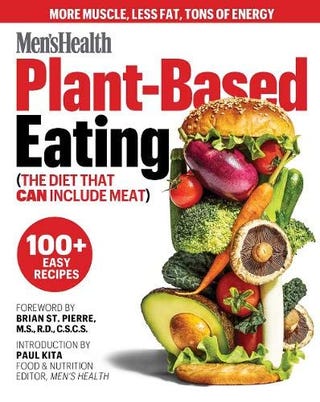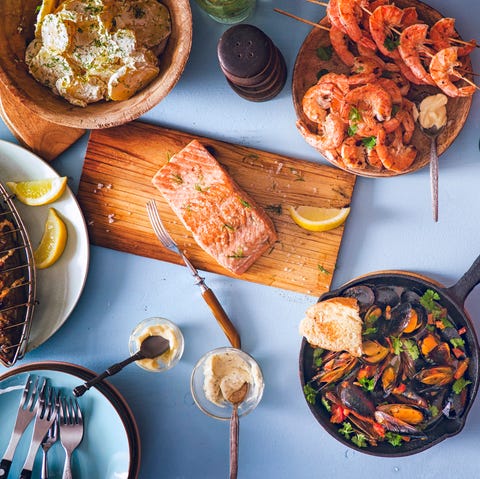My Whole Family Went Pescatarian for 3 Months. Here\u2019s What Happened.
AS MOST fathers know, dads do unexpected and unfamiliar things for their children.
I am a father of two girls, ages nine and 11. I am also a longtime consumer of meat. So when my daughters came to me late last year and told my wife and I that they had decided they wanted to stop eating meat, though would still eat fish, I was initially skeptical.
It’s not that we didn’t ever eat fish—we actually ate a fair amount—but when you’re eating more fish, well, you have to explore uncharted waters.
This would mean that my wife and I would have to change up our meal planning, adjust our shopping lists, and also get more familiar with cooking fish.
But my kids were resolved in their declaration, citing their concern for the future of our planet, so we decided to go pescatarian—as a family.
Being a registered dietitian, I know that there are huge health benefits to eating a diet rich in fish.

There’s the heart-health benefits of omega-3 fatty acids found in fatty fish like salmon and mackerel. There’s the lean, muscle-building protein of all fish. And there’s the excitement of a diet that is adventurous. (If you’ve ever wondered why it’s so hard to stick to a restrictive diet—it’s likely because you’ve lost the precious connection between excitement and food.)
So, for the last three months (and counting!) here’s how my meat-eating family adjusted to a pescatarian diet, the benefits we experienced, and how you can apply this approach to eating into your life as well.
What Can You Eat on a Pescatarian Diet?
The pescatarian diet is often compared to the Mediterranean Diet, which includes seafood, including fish and other aquatic animals (shellfish, squid, octopus, etc). “Pesce” means fish in Italian, which is where the approach to eating got its name.
Beyond fish, a good pescatarian diet is a good overall diet. That may include dairy products like eggs, milk, yogurt, and cheese (like it did in our family). But it should include whole grains, legumes, olives, and loads of fruits and vegetables.
While many people who eat a pescatarian diet do eat eggs and dairy, some do not. Technically, a person who does would then be following a lacto-ovo-pescatarian diet (like our girls) but let’s not get too nitty-gritty.
What Can’t You Eat on a Pescatarian Diet?
You cannot eat animal proteins that are not fish or seafood.

So that would include poultry (chicken and duck, as examples), beef, pork, lamb, or wild game (venison, boar, rabbit—you get the point).
Other than that, the world is your oyster (or clam, or mussel, or …).
Is a Pescatarian Diet a Good Diet?
It could be.

As a dietitian, I firmly believe (and the research backs me up here) that there’s no “right” or “wrong” diet—it’s really about if you can make the approach to eating work for you long-term.
Just like a burger isn’t “bad” per se—it’s more about what else is on your plate. It’s the same idea with any diet. A pescatarian diet can be tremendously healthy, but if it means living off fish sticks, French fries, baked goods, and soft drinks (all, technically pescatarian), well, not so much.

On the flip side, any diet that makes fiber and nutrient-rich produce the cornerstone of your plate is a good one.
“I’m always advocating for inclusion of more whole plant foods in anyone’s eating pattern” says Kelly Jones, M.S., R.D., C.S.S.D. “While I wholeheartedly support those who choose a completely vegan eating pattern for ethical reasons, those looking to change their diet for health reasons can really benefit from continuing to include seafood, particularly fatty fish and shellfish.”
And that’s one of the strongest benefits of a pescatarian—diet and why I’m glad our girls wanted to include seafood (otherwise my wife and I may have gently pushed back a bit).
Fatty, cold water fish, such as salmon, tuna, sardines, and mackerel, can certainly be part of a well-balanced eating plan, particularly because one of the key nutrients within those fish—omega-3 fats—are challenging to get from other foods.
What Kind of Meals Do You Eat on a Pescatarian Diet?
If you don’t eat much fish, you’re going to have to get creative.

My family does embrace cooking and loves to spend time in the kitchen, but we had to pull out some cookbooks, scour the internet, and try a few dishes we wouldn’t normally have if it wasn’t for this experiment.
But that’s a good thing.
We looked for alternatives to meatballs and made ones with lentils (great option), tofu (not many fans in this house), experimented with different bean and grain salads and have all commented that we feel really good about our new approach, particularly since we’re all putting our heads together to find great options that we all enjoy.
That said, my wife and I aren’t shunning meat completely and (maybe) our girls won’t either for the rest of their lives. We’re about 3 months in though and they’re staying strong and we’ll continue to support them and all learn and explore new foods together.
And the science bears this out. More data is emerging showing how beans reign supreme in what are known as the Blue Zones (areas of the world where there’s an abundance of centenarians). Combine that with getting more omega-3 fats (and selenium, zinc, and many other nutrients) than before, and we all feel better.
Source: Read Full Article


